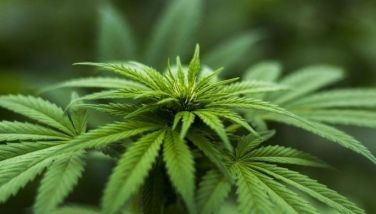Scientists start global census of the seas
October 19, 2003 | 12:00am
Vecchione’s reconnaissance will keep him busy all winter identifying "mystery animals." But it’s bad news for fishing boats that must venture ever further.
"The bottom is even rougher than expected," he reports. "It is not at all trawlable."
In Alaska, shoreline studies by Konar and her research partner, Katrin Iken, wrestle with the opposite problem: too many samples.
The ferocious tide peels back Kachemak Bay’s dreary gray veil to reveal a psychedelic ’70s world.
The rocky bottom is a lush shag carpet of glistening emerald algae and draperies of rubbery brown kelp. Gold and purple starfish sway like medallions. Clam and oyster shells crunch underfoot like spilled party snacks.
The University of Alaska biologists laboriously sample Cohen’s and Elephant islands in the bay with the help of a dozen students. They have already completed surveys at Kodiak Island, Prince William Sound and the Beaufort Sea above the Arctic Circle.
Others will use similar methods to examine shorelines in Russia, Japan, Thailand, Chile and Antarctica.
Shorelines are the most dynamic zone of the unknown marine environment. Beaches erode, rivers pump in fresh water and nutrients, storms pound and tides rip. Entire communities of plants and animals can change every few feet (every meter).
Most of the world’s population and industry are crowded along coastlines, so when catastrophe strikes, those regions suffer the most.
Again, high stakes. Exxon spent $9 billion trying to clean 1,500 miles (2,400 kilometers) of coastline after the Exxon Valdez spilled 11 million gallons of crude oil in Prince William Sound.
The shoreline holds great promise, too. Even humble sponges, for example, have yielded anti-cancer compounds while the spines of another have properties that engineers are incorporating in fiber-optic cables.
During high tide at Kachemak Bay, Konar and Iken scuba-dive about 30 feet (9 meters) down to where life always is submerged. "We pull up laundry bags full of kelp," Konar says.
From tagging data, they already knew that elephant seals swim to Alaskan kelp forests all the way from San Francisco.
At low tide, the steep slopes of little islands are exposed throughout the bay. They reveal distinct layers - barnacles and mussels up high, followed by red algae, brown algae and the crown of the kelp.
At each layer, the biologists isolate sections of exposed rocks with a square-meter frame of white plastic pipe. Iken photographs each square.
They kneel and count every living thing inside the frame.
Barnacles hiss and crackle, squirting bitter mucous in the women’s faces. Lime-green sea "cockroaches" skitter away. Blobby little tunicates - perhaps the simplest life form related to humans - cling tenaciously for the rising tide to rescue them.
The women scrape all of it into a pail, then repeat the process dozens of times. They persist through rain and spitting ice. Their chiseling echoes like gunfire.
In the bay, charter boats groan with 400-pound (180-kilogram) trophy halibut nicknamed "barn doors." Humpback whales sing and skyhop. A sea otter sculls by, munching a sea urchin. He’s gray-whiskered and big as a retriever.
None of them count in the shoreline census. "Not unless they swim through a meter-square," Iken explains.
There are surprises, even if they aren’t exactly IMAX-worthy.
"Holy cow!" Konar yelps. "There’s 20 sea cucumbers and 10 starfish under this rock."
Within minutes, the tide and the storm swallow their sites. After a punishing boat ride back to the mainland, the real census work begins.
Late into the chilly night, Konar and Iken record their catch under the glaring lights of a laboratory shed. Much of it resembles what’s rotting at the bottom of your refrigerator. The women keep the door and windows open, and their coats zipped.
"I’m not separating the little soranthera from the odonthalia," Konar scowls, flicking at a stubborn seaweed shred on her sleeve.
Iken dumps another pail of Kachemak salad on the table, giggling.
Hours drag. A scratchy clock radio plays oldies.
"I like the big picture," Iken says, waving tweezers and spinning her census dream. "I want to compare this with a site in California. And Chile.
"And did you know that nobody is working on gelatinous bioplankton?"
Konar nods. At her elbow rest 20 more buckets.
Through the open door, they can hear the tide racing out again.
BrandSpace Articles
<
>
- Latest
Latest
Latest
April 10, 2024 - 5:12pm
By Ian Laqui | April 10, 2024 - 5:12pm
March 4, 2024 - 3:32pm
By Ian Laqui | March 4, 2024 - 3:32pm
March 4, 2024 - 2:12pm
By Kristine Daguno-Bersamina | March 4, 2024 - 2:12pm
February 17, 2024 - 2:31pm
February 17, 2024 - 2:31pm
February 13, 2024 - 7:24pm
By Gaea Katreena Cabico | February 13, 2024 - 7:24pm
Recommended
January 7, 2025 - 12:00am


























